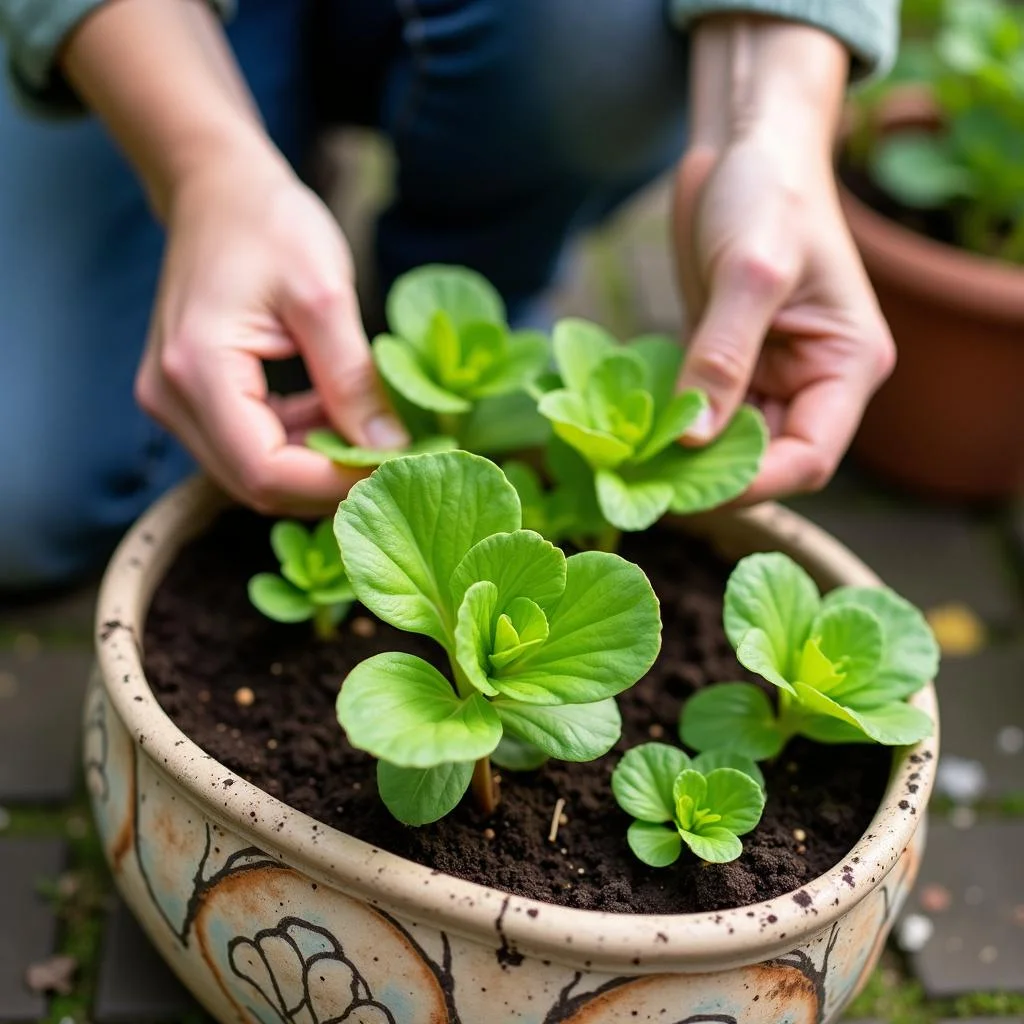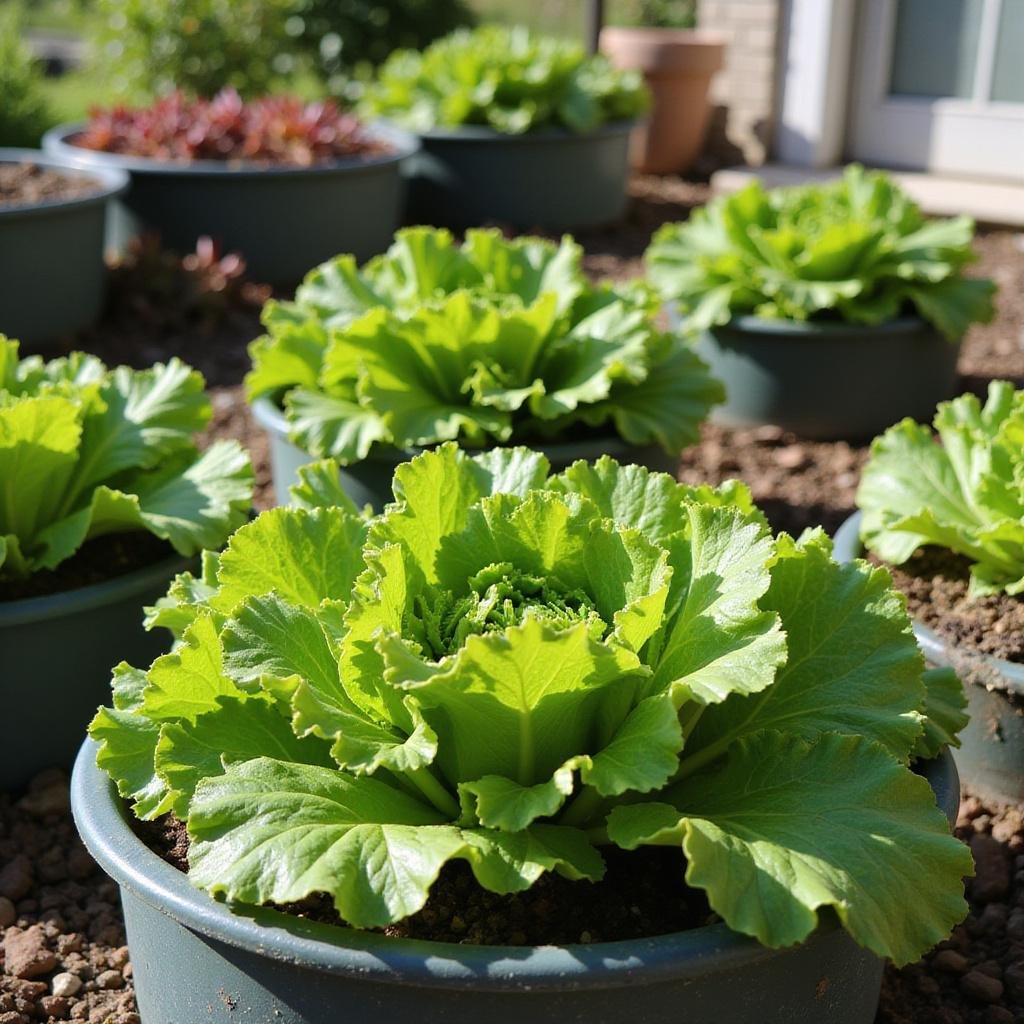1. Introduction
Growing lettuce in containers has become an increasingly popular choice for avid gardeners and beginners alike. Whether you have limited outdoor space or simply want the convenience of harvesting fresh greens from your patio, container gardening for lettuce offers a practical and enjoyable solution. Not only does it allow you to enjoy fresh, crisp lettuce all year round, but it also simplifies the process of cultivating lettuce in containers. In this comprehensive lettuce container gardening guide, we’ll explore everything you need to know to succeed in growing lettuce at home, including selecting the right containers, soil, and care tips. For those interested in more seasonal produce, check out our seasonal produce guide with recipes by month, and for a fresh snack, explore our spring rolls recipe.
2. Why Choose Container Gardening for Lettuce
Growing greens in containers provides numerous benefits, especially for urban dwellers and those with limited outdoor space. It enables easy control over soil quality, watering, and sunlight exposure—factors essential for healthy lettuce cultivation. Additionally, container gardening for lettuce is perfect for small patios, balconies, or even indoor environments. Modern grow lights for indoors make it feasible to maintain a thriving lettuce garden year-round, regardless of weather conditions.
Consider investing in a self-watering planter to reduce watering frequency and ensure your lettuce receives consistent moisture. With planters for indoor garden and nutrient-rich soil, starting a container vegetable gardening setup becomes an easy and rewarding project.
3. Choosing the Best Containers for Lettuce
When selecting the best containers for lettuce, size, drainage, and material are critical considerations. Lettuce has shallow roots, so a container with a depth of at least 6-8 inches is recommended for proper root development. Good drainage is vital to prevent waterlogging, which can lead to root rot. Options such as ceramic pots, plastic planters, fabric grow bags, or even innovative hydroponic systems—like the hydroponic system for lettuce—are perfect choices for container vegetable gardening. This way, you can ensure optimal soil moisture and air circulation for your lettuce plants.

4. How to Grow Lettuce in Containers
Growing lettuce in containers is a simple process that yields delicious, fresh greens. For success, follow these key steps in lettuce planting in pots:
- Choose the right variety: Leaf lettuce, Romaine, and butterhead are popular options suitable for seasonal planting in containers.
- Use nutrient-rich soil: A high-quality, nutrient-rich soil mix provides essential nutrients for vigorous growth.
- Plant at the right depth: Sow seeds or transplant seedlings according to seed packet instructions, ensuring proper depth for optimal germination.
- Ensure adequate sunlight: Lettuce thrives with at least 4-6 hours of direct sunlight daily. For indoor setups, supplement with grow lights for indoors.
- Water consistently: Keep the soil evenly moist, but avoid waterlogging, to promote steady and healthy lettuce growth.
5. Gardening Tips for Lettuce
For optimal results, incorporate these gardening tips for lettuce into your routine:
- Regularly harvest mature leaves to encourage continuous growth, a technique called cut-and-come-again.
- Rotate your crops annually to prevent pests and diseases, maintaining healthy container lettuce cultivation.
- Maintain proper spacing to prevent overcrowding, ensuring good air circulation and reducing disease risk.
- Apply organic mulch—such as straw or wood chips—to conserve moisture and suppress weeds.
- Feed your plants periodically with a balanced organic fertilizer to support lush, leafy greens.
6. Tips for Maintaining Healthy Container Lettuce Garden
Maintaining a vibrant container lettuce cultivation requires attentive care. Ensure your containers have proper drainage, water regularly, and provide enough sunlight—either natural or supplemented with LED grow lights. Watch for common pests like aphids or slugs, and use organic remedies such as neem oil from Lettuce seed balls or handpicking. Keep the soil pH between 6.0 and 7.0 for ideal lettuce growth. For easier watering, consider an automatic watering system that ensures consistent moisture levels.
7. FAQs about Growing Lettuce in Containers
What are the best containers for growing lettuce?
The most suitable containers for growing lettuce in containers are those that are at least 6-8 inches deep, with good drainage options. Popular choices include ceramic pots, plastic planters, fabric grow bags, and innovative hydroponic systems like the hydroponic system for lettuce.
How much sunlight does lettuce need in containers?
Lettuce generally requires about 4-6 hours of direct sunlight daily for healthy growth. For indoor gardens or low-light locations, supplement with grow lights.
How often should I water my container lettuce?
Water regularly to keep the soil evenly moist—check that the top inch feels moist but not soggy. Using a automatic watering system can simplify this task.
Can I grow lettuce year-round in containers?
Yes, in mild climates or with indoor setups, you can harvest lettuce year-round. In colder regions, consider using cold frames or grow indoors with LED grow lights.
What are common pests for container-grown lettuce?
Common pests include aphids, slugs, and snails. To protect your plants, use organic pest control methods like lettuce seed balls or handpicking pests conveniently.
8. Conclusion
Growing lettuce in containers is an accessible, rewarding way to enjoy fresh greens right from your home. By selecting the right containers, using quality soil, and following proper watering and lighting practices, you can produce a thriving container lettuce garden. Whether you’re an experienced gardener or just starting out, these gardening tips for lettuce will help ensure a bountiful harvest. Begin your seasonal produce journey today, and savor your own homegrown greens! For more gardening inspiration, explore our spring rolls recipe.

